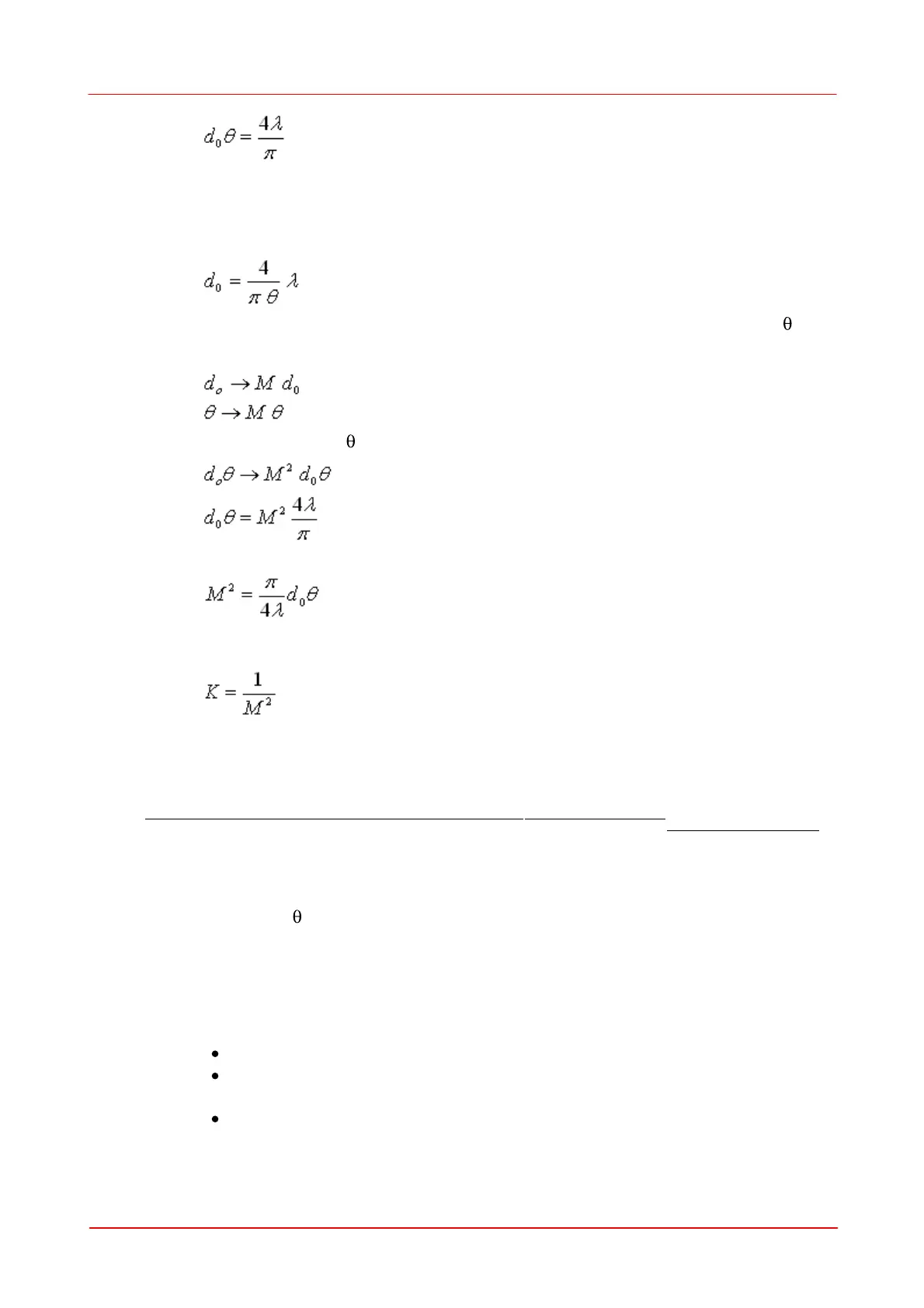© 2011 Thorlabs
143Application Note
From this equation it is obvious that a smaller beam waist can only be achieved by
increasing the divergence angle. This implies using a lens with short focal length.
Also the wavelength determines the min. achievable spot size because beam waist
d
0
is directly proportional to wavelength.
For higher modes than the fundamental mode TEM
00
both the divergence angle
and the beam waist diameter d
0
increase by a factor M.
Therefore the product d
0
* increases by a factor of M
2
.
Finally, the times-diffraction-limit factor M
2
is calculated by
The reciprocal of this times-diffraction-limit factor M
2
is called the beam propagation
factor or beam quality K.
The following table illustrates the relationship these parameters between a perfect
Gaussian beam and non-perfect beam.
Times-diffraction-limit factor M
2
Beam propagation factor = Beam quality K
Beam waist for given lens
Divergence angle at given beam waist d
0
Reasons for non-ideal Gaussian Beam with M
2
> 1
Gaussian beam is preferred to use because of its minimum divergence angle and
the ability to get the minimal focus diameter.
Differences to Gaussian shape can be due to
existence of higher modes
amplitude and phase distortions due to inhomogeneous gain medium in
lasers
occurrence of extraordinary beams

